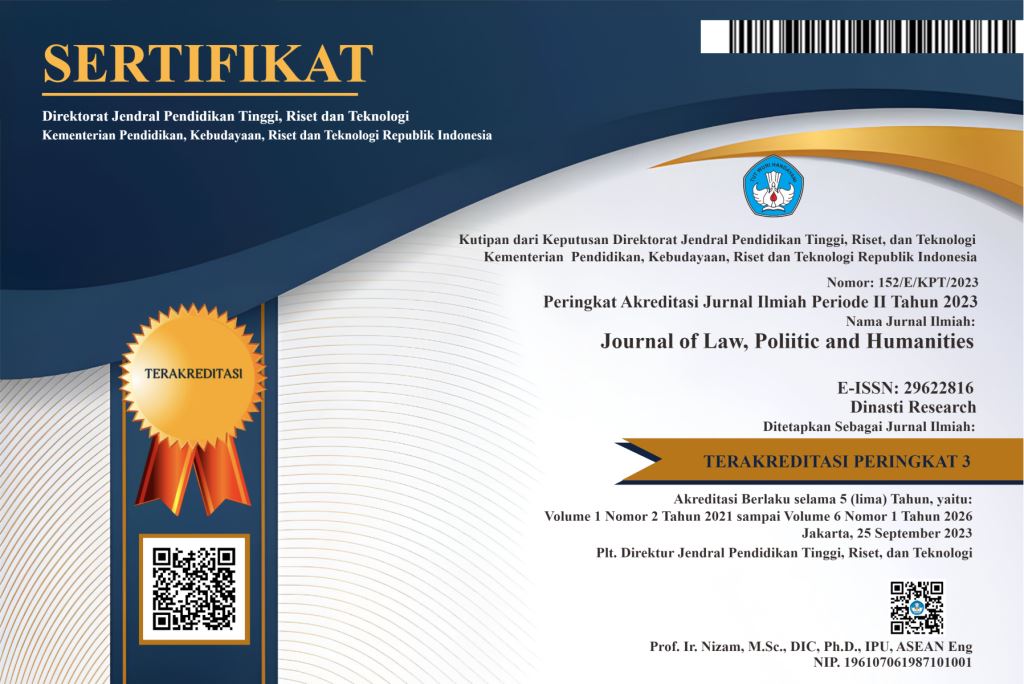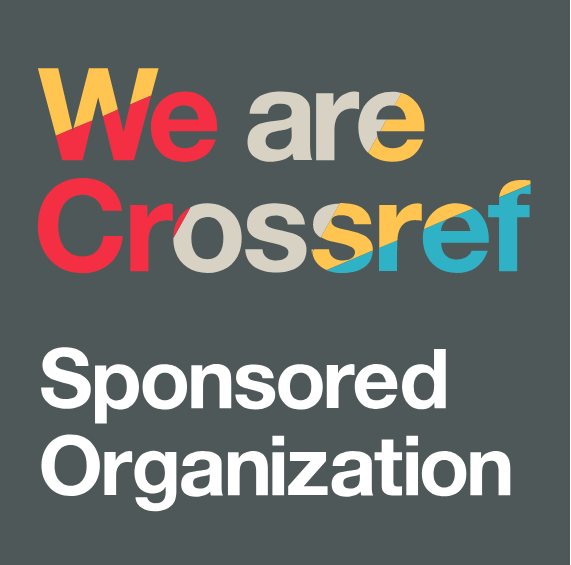Economic Impact Analysis of Sea Toll Program Implementation in Eastern Indonesia: A Review in Papua, Maluku, and East Nusa Tenggara Regions
DOI:
https://doi.org/10.38035/jlph.v5i2.1142Keywords:
Policy Implementation, Economic Impact, Sea Toll, Maritime AxisAbstract
The Sea Toll is a form of transportation development policy in support of the government's development policy direction, especially as an embodiment of the third axis of Indonesia's policy agenda as the world's maritime axis, namely prioritizing infrastructure development and maritime connectivity. The lagging development in the eastern region of Indonesia has its own relevance for the important role of the Sea Toll program.This research aims to analyze the implementation of the Sea Toll program in order to support development in the Papua, Maluku and East Nusa Tenggara regions and analyze the economic impact on these three regions. This research uses a post-positivist paradigm. This study uses a qualitative and quantitative approach (mixed method) with a post-positivist paradigm. The data sources for this study consist of primary and secondary data sources. Primary data sources come from interviews, observations, and surveys. The secondary data sources are in the form of document studies. The data was analyzed using qualitative and quantitative data analysis techniques. In qualitative data analysis techniques, this study follows the Miles and Huberman model data analysis method. As for quantitative data analysis techniques, this study applies Results Chain Method adopted Partial Least Square (PLS) analysis using Smart PLS software. The research results show that the Sea Toll policy can still have an economic impact both directly and indirectly. The implementation of the sea toll has a direct impact on the transportation sector but not yet optimal to have a work impact. In addition, the implementation of sea tolls also has an indirect impact on other economic sectors, but has not been able to contribute to the increase in taxes or regional revenue.
References
Agastia, I. G. B. D. (2021). Joko Widodo’s fleeting maritime ambitions: an actor-specific analysis of indonesia’s global maritime fulcrum. Journal of Asian Security and International Affairs, 8(3), 304–323.
Akustia, W., Juniati, H., Purwiningsih, F. S., Malisan, J., Mutholib, A., Tarigan, H., Purwoko, P., Sulistyono, D., Purwantini, T. B., & Haryati, H. (2024). Transportation connectivity development strategy in the Wakatobi islands, Indonesia. Journal of Infrastructure, Policy and Development, 8(12), 7606.
Fauzi, I., Airawati, M. N., Cholishoh, E., & Murtiaji, C. (2024). The development and challenges of sea tolls in supporting Indonesia’s vision 2045. AIP Conference Proceedings, 3145(1).
Kusuma, L. T. W. N., & Tseng, F.-S. (2019). Analysis of the impact of the “sea toll” program for seaports: Resilience and competitiveness. Applied Sciences, 9(16), 3407.
Laborda, L., & Sotelsek, D. (2019). Effects of road infrastructure on employment, productivity and growth: An empirical analysis at country level. Journal of Infrastructure Development, 11(1–2), 81–120.
Lee, J. (2017). The political economy of Indonesia’s Global Maritime axis and infrastructure development plan under the Jokowi Administration. ?????, 20(1), 27–52.
Manti, Y., Kusuma, L., Ramadhani, A., & Majid, M. (2019). Indonesia sea toll strategy framework directive: Innovative and participatory decision-making methods towards the world maritime axis. 2019 1st International Conference on Engineering and Management in Industrial System (ICOEMIS 2019), 394–405.
Nenavath, S. (2023). Does transportation infrastructure impact economic growth in India? Journal of Facilities Management, 21(1), 1–15.
Pokharel, R., Bertolini, L., & te Brömmelstroet, M. (2023). How does transportation facilitate regional economic development? A heuristic mapping of the literature. Transportation Research Interdisciplinary Perspectives, 19, 100817.
Prus, P., & Sikora, M. (2021). The impact of transport infrastructure on the sustainable development of the region—Case study. Agriculture, 11(4), 279.
Putra, A. A., Magribi, L. O. M., Sukri, A. S., Balaka, R., & Walendo, L. (2019). Shipping Connectivity in Supporting Logistics Transport Distribution in South East Sulawesi. International Journal of Civil Engineering and Technology, 10(11), 56–65.
Raharjo, S. N. I., & Pudjiastuti, T. N. (2024). Indonesia in the BIMP-EAGA: Assessing connectivity development in reducing inequality. SUVANNABHUMI, 16(1), 175–203.
Sa’adah, K., & Soetirto, A. M. (2020). Jokowi’s 4 Nawacita Policy: Sea Toll as an Epitome of New Silk Road for Indonesia’s Economic Growth. Indonesia’s Path Toward Middlepowership, 45.
Sandee, H. (2016). Improving connectivity in Indonesia: The challenges of better infrastructure, better regulations, and better coordination. Asian Economic Policy Review, 11(2), 222–238.
Scott, D. (2019). Indonesia grapples with the Indo-Pacific: Outreach, strategic discourse, and diplomacy. Journal of Current Southeast Asian Affairs, 38(2), 194–217.
Sitanggang, S. N. (2021). Jokowi Administration’s Maritime Axis Development Policy. International Journal on Social Science, Economics and Art, 11(1), 20–32.
Sofiyandi, Y., Kurniawan, Y. R., & Yudhistira, M. H. (2023). The impact of maritime logistics subsidy on food prices: Evidence from Indonesia. Economic Analysis and Policy, 79, 1026–1045.
Victoria, O. A., Pambudi, M. A. L., & Dewi, R. K. (2022). The Reconstruction of Indonesian Shipping Law in the Sea Transportation System for a Successful Sea Toll Program and Improvement of Shipping Administration. International Journal of Law Reconstruction, 6(2), 156–171.
Weizheng, Y. (2021). Research about the impact of transportation infrastructure on economic growth in a transportation power. E3S Web of Conferences, 253, 01037.
Wicaksana, I. G. W. (2017). Indonesia’s maritime connectivity development: domestic and international challenges. Asian Journal of Political Science, 25(2), 212–233.
Witro, D., & Yanti, B. Z. (2021). Implications of sea toll programs to national development economy: Reinterpretation of marine verses in al-Quran. El-Qish: Journal of Islamic Economics, 1(2), 83–97.
Zen, F., & Yudhistira, M. H. (2022). Maritime Highway and Eastern Indonesia Development.
Zhang, Y., & Cheng, L. (2023). The role of transport infrastructure in economic growth: Empirical evidence in the UK. Transport Policy, 133, 223–233.
Downloads
Published
How to Cite
Issue
Section
License
Copyright (c) 2024 Robby Kurniawan, Sudjanadi Tjipto Sudarmo, Edi Abdurachman

This work is licensed under a Creative Commons Attribution 4.0 International License.
Authors who publish their manuscripts in this journal agree to the following conditions:
- The copyright on each article belongs to the author(s).
- The author acknowledges that the Journal of Law, Poliitic and Humanities (JLPH) has the right to be the first to publish with a Creative Commons Attribution 4.0 International license (Attribution 4.0 International (CC BY 4.0).
- Authors can submit articles separately, arrange for the non-exclusive distribution of manuscripts that have been published in this journal into other versions (e.g., sent to the author's institutional repository, publication into books, etc.), by acknowledging that the manuscript has been published for the first time in the Journal of Law, Poliitic and Humanities (JLPH).


























